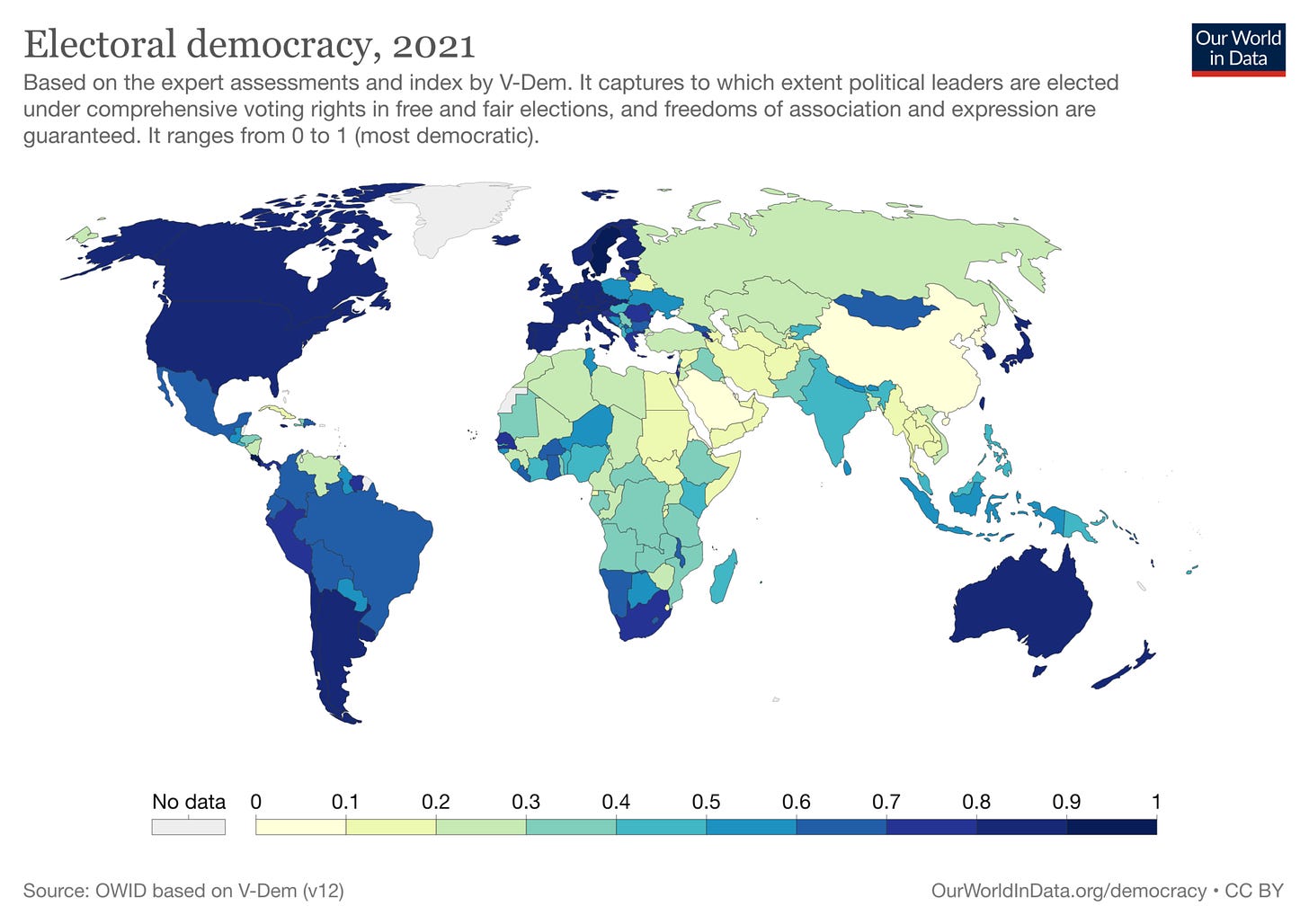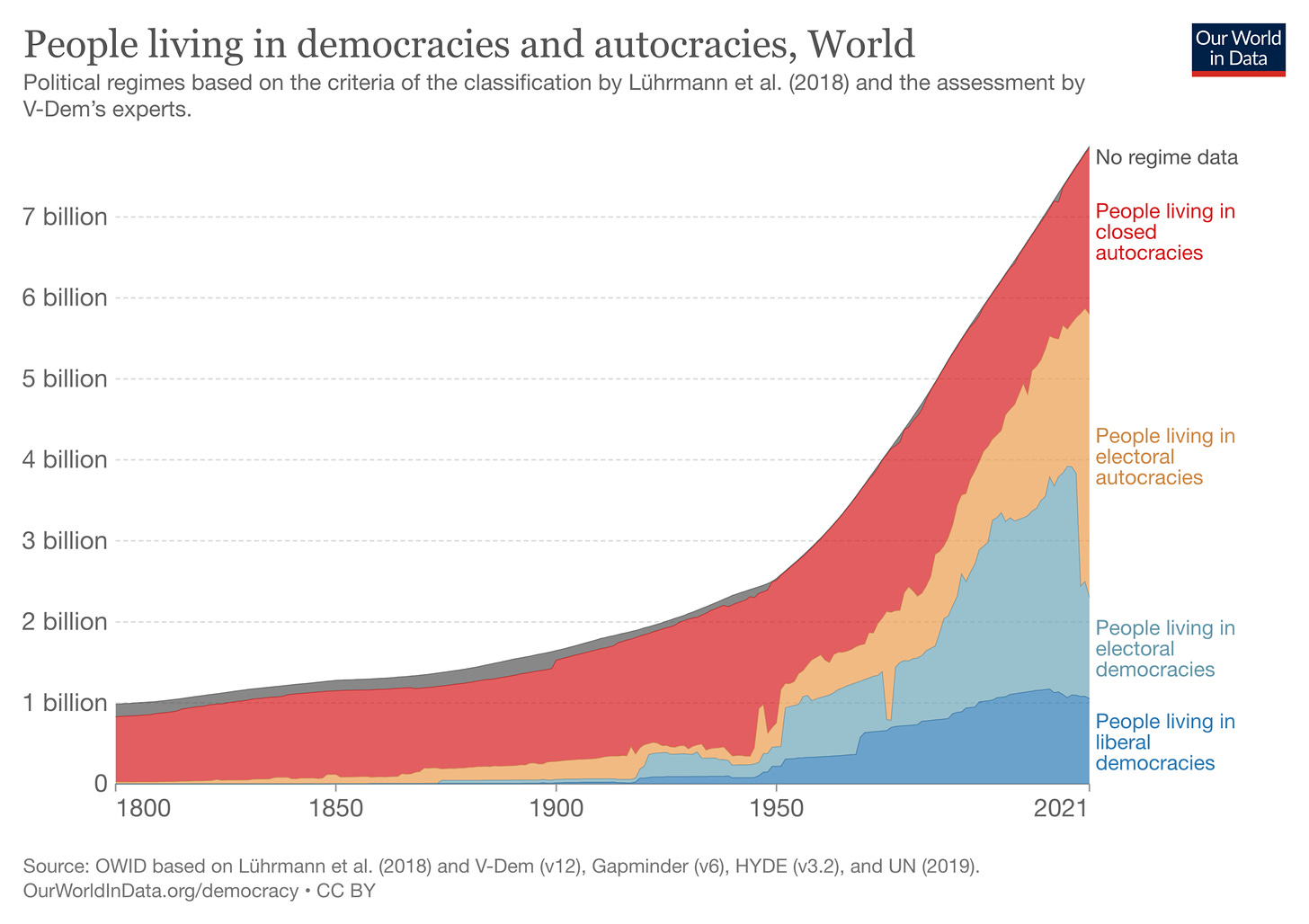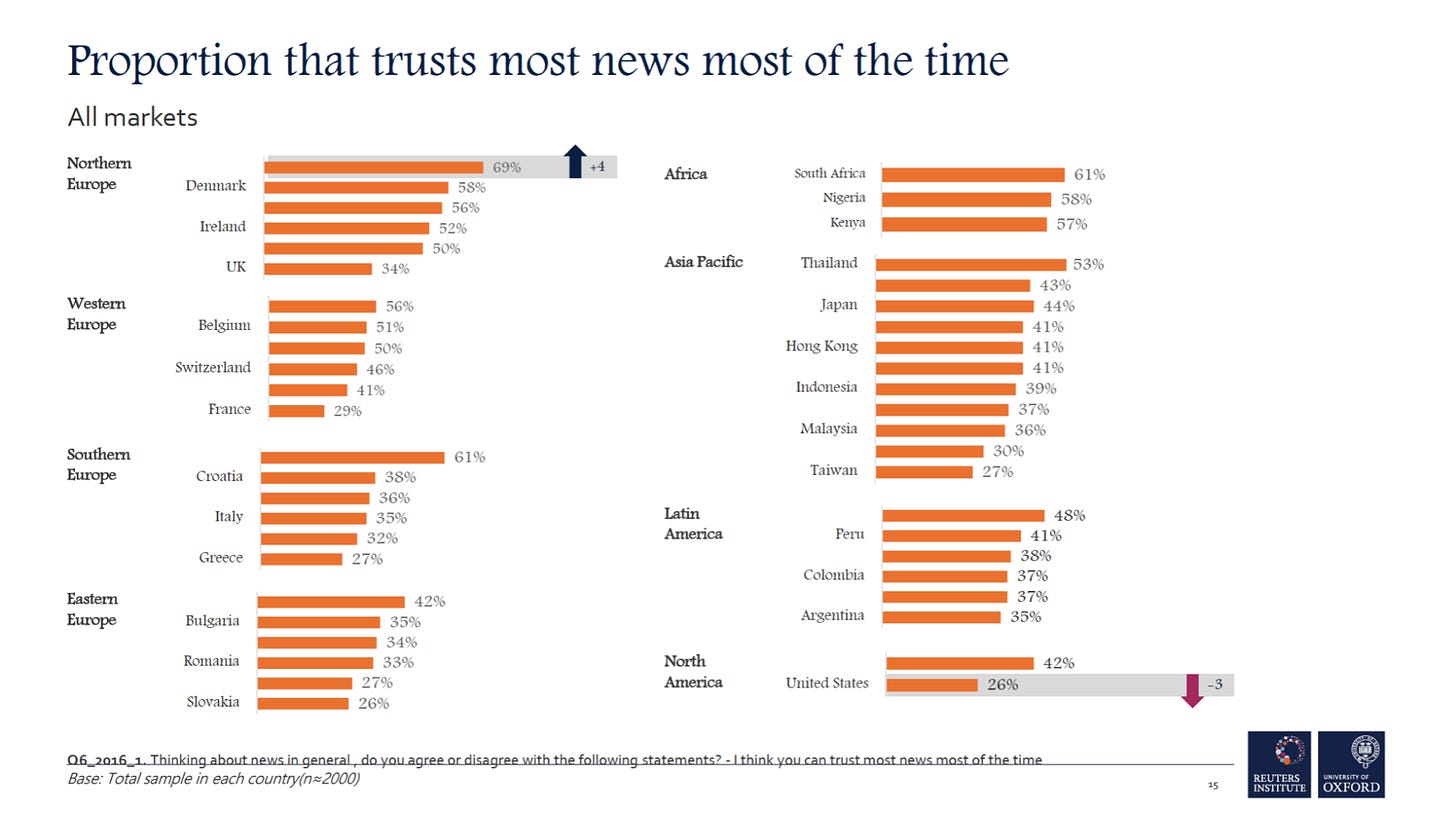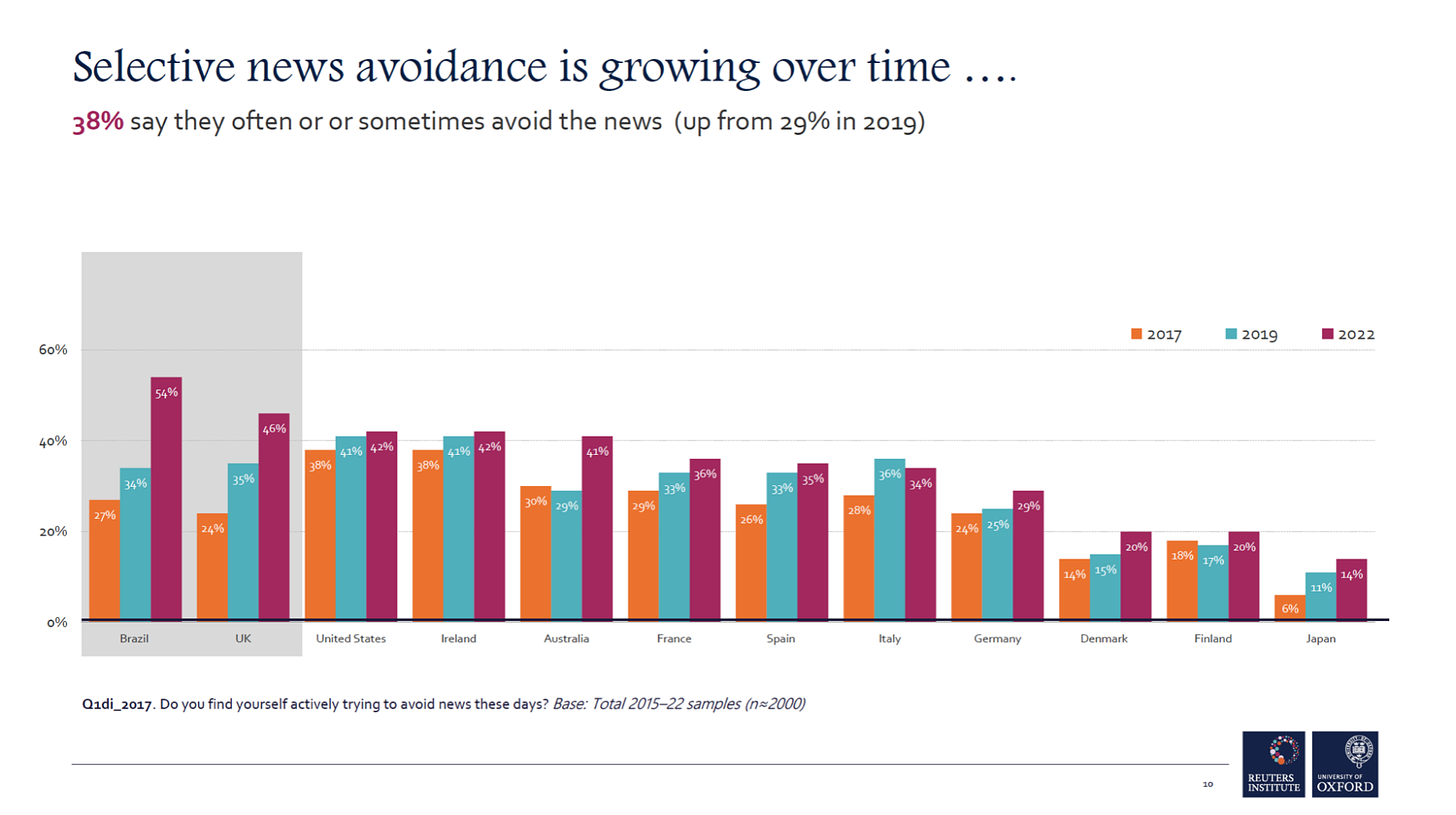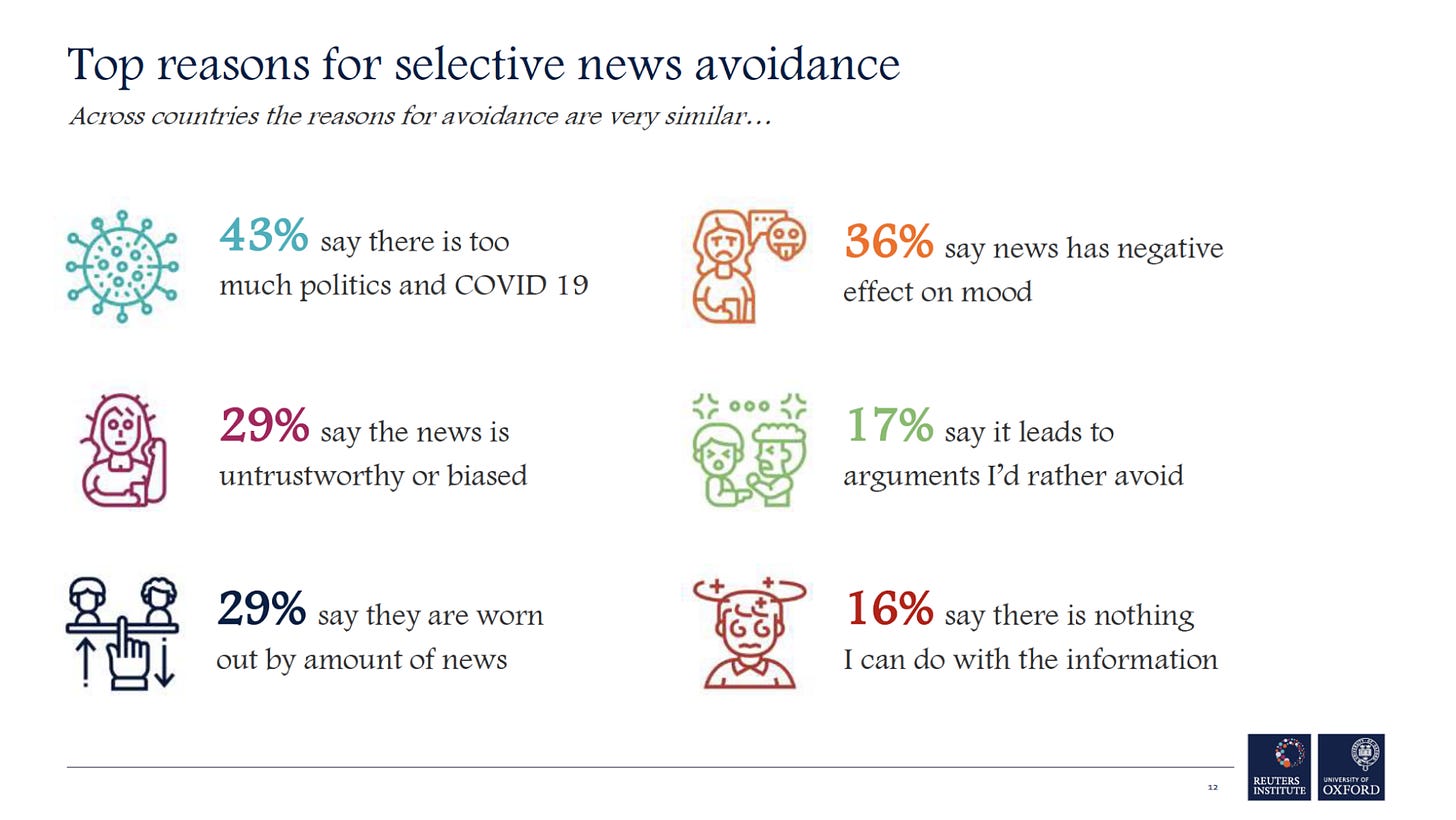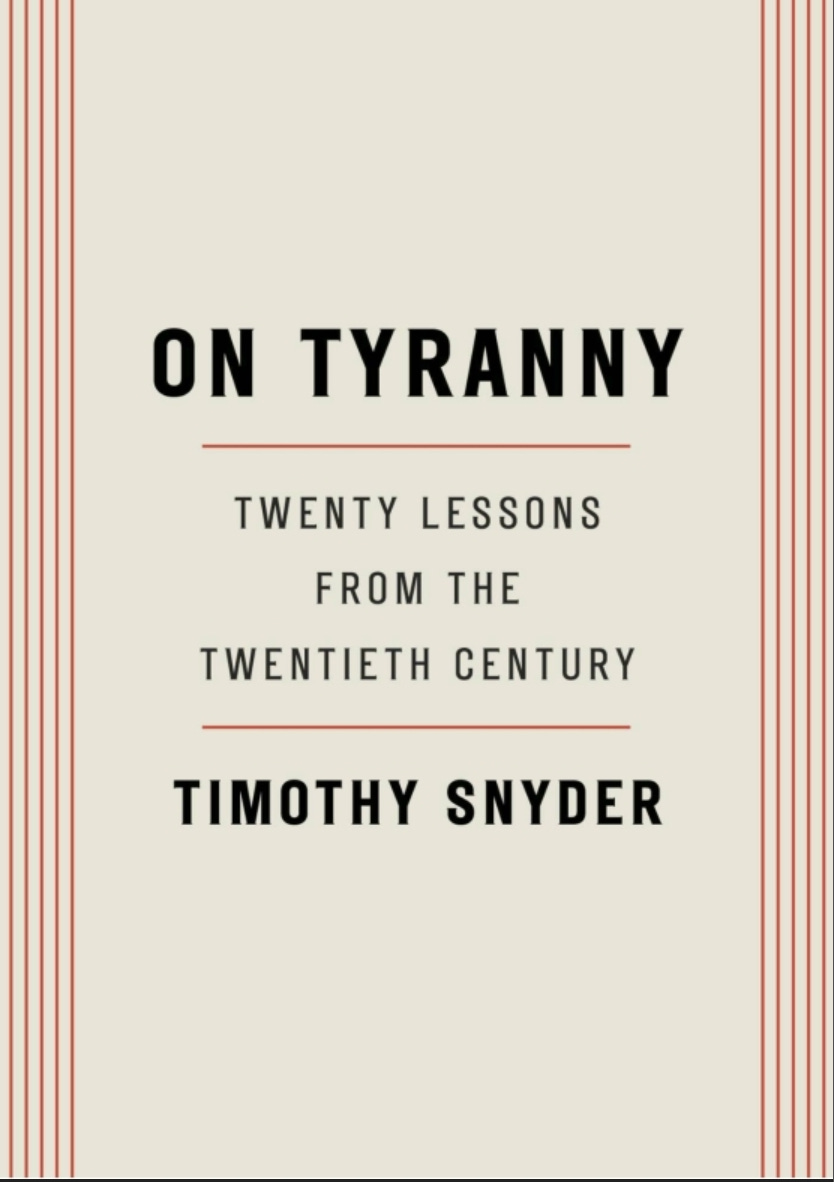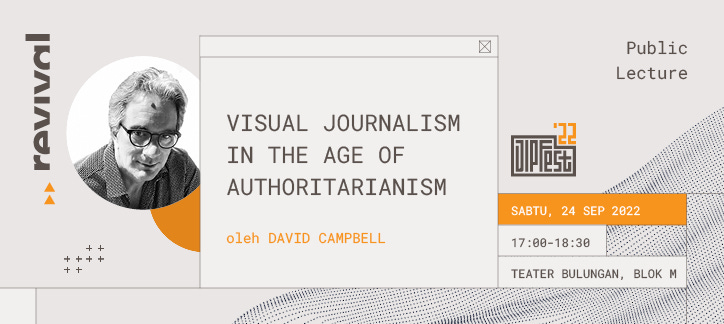Visual Journalism in the Age of Authoritarianism - What Can and Should You Do?

Introduction
A global political trend towards authoritarianism is destroying the democratic culture upon which free and independent media depend.
In addition, the ongoing revolution in the media economy is constantly putting the infrastructures of journalism under strain, and the conventional codes of mainstream journalism hamstring accurate coverage of this anti-democratic trend.
If you want to document contemporary events and issues, how should you respond to these pressures, and what can and should you do?
This article focuses on visual journalism and visual storytelling in the documentary tradition that wants to report on our understanding of key features in our world.
There is a lot of good visual journalism being produced. But I will argue we face a significant historical moment in which visual journalism needs to do better reporting. This moment is where democratic systems - systems that depend upon and enable free and independent media - are under serious threat.
To come to grips with what to do in this historical moment, I believe good visual journalism needs to understand its context better. This context has two key elements. First, the political context in which visual journalism is located, and second, the journalistic context that informs and shapes visual journalism.
Let’s explore both.
The global political context
Everything we do as journalists, photographers, artists, and critics depends upon having the cultural space to think, create and work freely. That space is best secured by democratic structures, where our governments are derived from free and fair elections, the rule of law governs all citizens equally, and the right to assemble and express ourselves freely is guaranteed. While these principles do not account for all forms of power that constrain our lives - especially economic power - they are the best political framework we have for both individual and collective enrichment.
This map shows in blue those countries that have those rights. Note that it lists the United States as a full democracy. I will argue below that this is a generous assessment that does not consider disturbing developments in America. These developments will directly or indirectly affect all of us, regardless of where we live.
Despite the encouraging picture of this map, there is a global anti-democratic trend. Indeed, the number of democracies has recently declined. Let’s look at how many countries are democracies. We see the number of democracies in the world reached an all-time high in 2012, with 97 electoral democracies. A decade on, their number has fallen to 89 countries. The same is true of liberal democracies. Their number has fallen from 42 countries in 2012 to 34 in 2021. (“Liberal democracies” are those that have established rights that are in addition to the formal processes of “electoral democracies”).
There are also fewer people living in democracies, which is an important measurement. However, the number of democratic countries does not tell us how many people enjoy democratic rights. Two centuries ago, nobody in the world had democratic rights.
However, the number of people that have democratic rights has recently plummeted. Between 2017 and 2021, this number fell from 3.9 billion to 2.3 billion people. During the same years, the number of people living in liberal democracies fell from 1.2 billion to 1 billion. Examples of people losing democratic rights are:
The 1.4 billion people in India
The 84 million people in Turkey
The 28 million people in Venezuela
We also see democracy declining in Kenya, Sri Lanka, Hungary, Brazil, The Philippines, Poland, and El Salvador. Even in countries with robust democratic traditions, there are warning signs - a party founded by neo-Nazis came second in Sweden’s recent election, and a party derived from Italy’s neo-fascist movement has won power in Rome.
At the same time, there is resistance. Just think of the women’s protests in Iran or the street protests in Russia against the war mobilization. Even in some of the least democratic countries, people are struggling for spaces of freedom.
However, the first map above notwithstanding, it is in the U.S. that we see ominous developments.
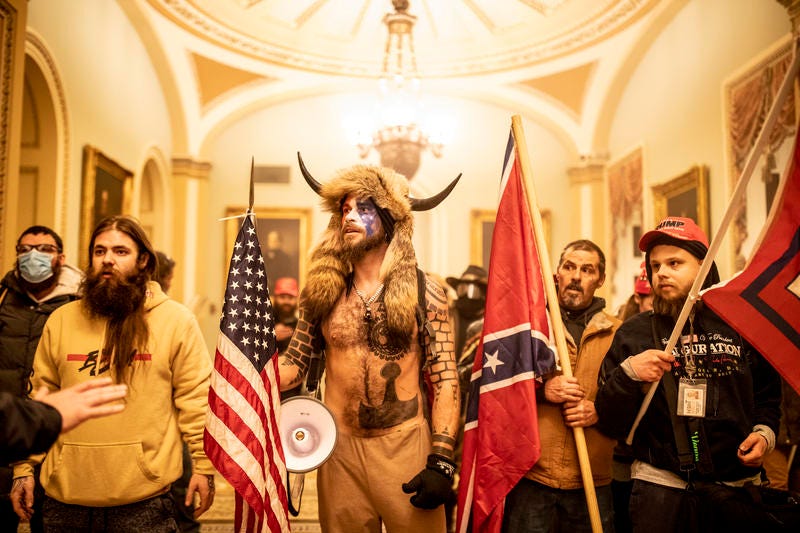
American democracy in danger
The violent storming of the U.S. Capitol on January 6, 2021, was the visible manifestation of an attempted coup d’etat by President Donald Trump and his allies. It was an attempt to seize power illegally by preventing the certification of the 2020 presidential election results from taking place on that day.
The insurrectionists who fought with police and penetrated the building were fuelled by Trump’s claim that the election was “rigged,” a “fraud” and “stolen.” While Trump’s anti-democratic ethos extends back to at least 2012, these latest falsehoods began on the night of the election. They continued through Trump’s speech at the “Stop the Steal” rally in Washington, where he incited the crowd to march to the capitol, and are repeated constantly today.
But Trump went well beyond making statements in his effort to hang on to power. Aided and abetted by some Republican lawmakers, he “tried pulling levers of government, from state lawmakers to Justice Department officials, to overturn the election.” In what likely amounted to a criminal conspiracy, these efforts included demands for legislators in Arizona to declare him the winner regardless of the count and for the Secretary of State in Georgia to go and find more votes.
In 2020 those state election officials, many of them Republicans, resisted the illegal efforts to overturn the presidential election. However, the “big lie” about the stolen election goes well beyond Trump and his closest acolytes. Indeed, 147 Republicans (8 senators and 139 members of the house) voted immediately after the storming of the Capitol building with objections to the election results in Arizona and Pennsylvania.
The hearings of the Select Committee to investigate the January 6th attack on the U.S. Capitol have publicly disclosed the scale and scope of the coup attempt. Parallel to this investigation — which the leadership of the Republican Party calls the “persecution of ordinary citizens engaged in legitimate political discourse” — we have seen the adoption of “election integrity” as the code word for the right wing’s moves to undermine established democratic norms and practices.
Many state legislatures are home to large numbers of Republican “election deniers.” This allows them, in the name of “election integrity,” to target local and state administrations and control the offices that govern the conduct of future American elections. Allied with this is a “precinct strategy” whereby Republican operatives who subscribe to the “big lie” are installed as poll workers reporting to networks of friendly lawyers so that electoral results can be challenged in the courts should Democrats win. None of this is secret - there are public events at which this strategy is openly discussed, and participants are readily recruited. It is all summarised in a New York Times Opinion video aptly titled “Inside the Completely Legal G.O.P. Plot to Destroy American Democracy.”
All this means the next coup is already underway. In terms of the next presidential election, Yale history professor Timothy Snyder has detailed how this strategy plays out:
“The scenario…goes like this. The Republicans win back the House and Senate in 2022, in part thanks to voter suppression. The Republican candidate in 2024 loses the popular vote by several million and the electoral vote by the margin of a few states. State legislatures, claiming fraud, alter the electoral count vote. The House and Senate accept that altered count. The losing candidate becomes the president. We no longer have a “democratically elected government.” And people are angry.
No one is seeking to hide that this is the plan. It is right there out in the open. The prospective Republican candidates for 2024, Donald Trump, Ted Cruz, and Josh Hawley, are all running on a big lie platform. If your platform is that elections do not work, you are saying that you intend to come to power some other way. The big lie is designed not to win an election, but to discredit one. Any candidate who tells it is alienating most Americans, and preparing a minority for a scenario where fraud is claimed. This is just what Trump tried in 2020, and it led to a coup attempt in January 2021. It will be worse in January 2025.”
Maybe it will not play out exactly as Snyder argues. Maybe the Republicans won’t be as successful in next month’s midterms as once expected. Maybe resistance to the Republican’s “election integrity” plan will derail it.
There is, as the great Irish commentator Fintan O’Toole has written, a logic to these anti-democratic and autocratic plans which is likely to sustain them. This is especially the case when we appreciate that “while Republicans have controlled the White House for 12 of the past 20 years, only four of those years have resulted from a Republican having gotten more votes than his Democratic opponent.” As O’Toole argues:
“What Trump stumbled on was that the solution to the party’s chronic inability to win a majority of voters in presidential elections was to stop trying and instead to embrace and enforce minority rule. This possibility is built into the American system. The electoral college, the massive imbalance in representation in the Senate, the ability to gerrymander congressional districts, voter suppression, and the politicization of the Supreme Court—these methods for imposing on the majority the will of the minority have always been available. Trump transformed them from tactical tools to permanent, strategic necessities.”
Once we understand this, we understand the character of the Republican Party, says O’Toole: “The logic is not that a permanently minority party may move toward authoritarianism but that it must. Holding power against the wishes of most citizens is an innately despotic act.”
In conventional analyses, much of the above argument would be seen as evidence of “polarization,” the idea that American politics has become equally divided between the irreconcilable positions of the two established political parties. But falling back on the concept of “polarization” as the cause of America’s anti-democratic predicament is a lazy, seemingly objective, but inaccurate understanding.
It is not the case that each of America’s two main parties has equally departed from the center. On the contrary, the facts are, as O’Toole declares, “one half of a two-party system has passed over into a post-democratic state.”
“The…Republican Party has made majority rule aberrant, a notion that transgresses the new norms it has created. From the perspective of this system, it is Biden, and his criminal voters, who are the deviant ones. This is the irony: Trump, the purest of political opportunists, driven only by his own instincts and interests, has entrenched an anti-democratic culture that, unless it is uprooted, will thrive in the long term. It is there in his court appointments, in his creation of a solid minority of at least 45 percent animated by resentment and revenge, but above all in his unabashed demonstration of the relatively unbounded possibilities of an American autocracy.”
Or, to put it even more bluntly, there is only one party - the party of right-wing radicalization, the Republican Party - “that tolerates violence, refuses compromise in any way, and is defined by white Christian nationalism;” and there is “only one party [that] conducts fake election audits, habitually relies on conspiracy theories and wants to limit access to the ballot.”
Telling this story requires journalism to be committed to accuracy above all else.
In the next section, we will explore how contemporary mainstream journalism, especially in the U.S., is beholden to a series of commitments that constrain its truthfulness on this issue.
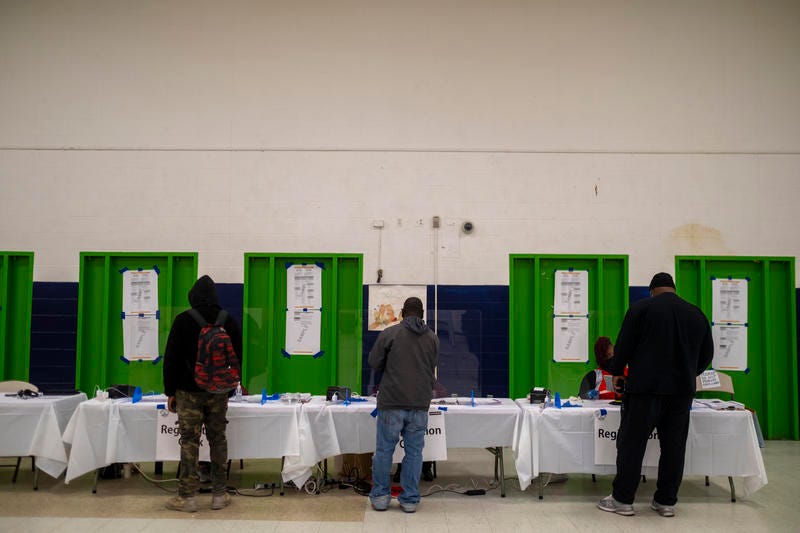
The journalism context
We often hear that the media is “broken” - do a web search for “media is broken,” and you will find numerous arguments from all sides diagnosing seemingly endless problems. Of course, the view of a currently broken media system presupposes a golden age in which the media “worked,” but that nostalgia assumes a particular understanding of the media’s purpose.
To have a clear-eyed assessment of what is and is not working, we need to understand the purpose of the mainstream media. Historically, the mainstream media has been a commercial enterprise built around advertising. Providing news and information was the bait that attracted readers to see advertisements. Those advertisements were the economic basis of the media, and the more eyeballs that saw them, the better.
Media organizations could charge hefty fees for advertisements when reaching an audience depended on owning an expensive printing press, distribution system, or broadcast station. As a result, advertising historically underwrote approximately 80% of the cost of news organizations. This means individuals did not pay for journalism directly - subscriptions always made up a tiny fraction of the cost of producing the news and information, a fact that should dampen down contemporary moral qualms about people not paying directly for news.
Things are different these days. With the limitless nature of the web (no space restrictions, no fixed editorial deadlines) and the pressures that come from rolling news and live updates, we have an abundance of information. This means, as Jay Rosen says: “the news system isn’t really designed for public understanding. It’s designed to produce new content every day.”
And lots of new content is produced every day, but it comes in the form of “incremental coverage” with the latest happening often presented in the “savvy style” of the inside game. This incremental coverage, however, can lose sight of, or even obscure, the larger issues because, as Rosen says, “there’s no architecture of understanding there that the updates can attach themselves to.” We need a better sense of how the latest development fits into the big picture of issues and policy, otherwise, the result is an abundance of coverage, almost endless content, and very little public understanding.
In terms of covering anti-democratic developments, the emphasis on producing content over understanding is amplified by journalism’s adherence to a set of historical codes and norms. As Margaret Sullivan - former reader’s editor at the New York Times and media columnist at The Washington Post - declares, “when covering politicians who are essentially running against democracy, old-style journalism will no longer suffice.”
What are these old-style codes and norms that no longer suffice? First and foremost, we’re talking about the commitment to “objectivity,” understood as a balance between two equal sides to an argument, policy, or story. Objectivity, in this sense, is grounded in the commercial basis of mainstream media because giving equal attention to both sides, regardless of what they do or say, maximizes the audience who will be exposed to the advertising that sits alongside the report.
This sort of “objectivity” actually distorts reality and diminishes understanding. There are not two equal sides to all things that should be balanced. There are not two equal sides to issues like safeguarding democracy, responding to the climate crisis, overcoming white supremacy, or understanding the Holocaust. We saw it in the 1990s during the coverage of the Bosnian War - reporting often focused equally on the violence of all sides even though the evidence showed Bosnian Serb forces were responsible for 90% of the genocidal violence. To pretend such events and issues can be approached in terms of balance produces false equivalence between demonstrably unequal positions. The end result is the opposite of accuracy.
Calling this historical commitment to this form of “objectivity” into question does not license an anything goes, ‘every opinion counts equally’ form of “subjectivity”. On the contrary, as Sullivan writes, if you are committed to journalism, you must:
“keep a sharp focus on truth-seeking, not old-style performative neutrality. Does that mean we throw objectivity out the window? Of course not. We should be resolutely objective in the sense of seeking evidence and approaching subjects with an open mind. We should not, however, resort to taking everything down the middle, no matter what. Rather than, for example, having equal numbers of Republicans and Democrats (or conservatives and progressives) on every talk show, or devoting equal numbers of words to each side of a political argument, we should be thinking about what coverage serves the public best.”
Another imperative driving the need to do journalism differently in the current political climate is that two audience trends - a growing lack of trust and news avoidance - are potentially tied to how issues are conventionally covered. Data on these come trends, visualized in the charts below, comes from the global survey reported in the Reuters Institute for the Study of Journalism Digital News Report 2022.
Globally, there are many trust issues with the media. Indeed, trust is declining in 21 markets and increasing in only seven.
Despite the prevalence of distrust, most people remain engaged with the news. However, there is growing selective news avoidance, where individuals choose to limit exposure to news or certain types of news.
News avoidance is a conscious, deliberate choice, not a question of an involuntary, collective ‘fatigue’. If we’re honest with ourselves, it is something that even the most ardent news junkie does, at least from time to time. It is certainly something I have increasingly implemented. As such, I don’t regard news avoidance as evidence of a moral failing on the part of individuals. Instead, I see it as a product of media organizations producing content that fails to keep our attention, hold our interest, and increase our understanding.
Given that he reasons for news avoidance are many and varied, perhaps it can be addressed by forms of journalism and reporting that can offer something which does not leave us depressed, immersed in the negative, devoid of understanding, unsure of what to do with the information we have absorbed.
What can and should you do?
The decline of democracy and the rise of authoritarianism are global phenomena. That said, I have spent a good amount of time in this article focusing on anti-democratic developments in the U.S. That is because even in formal democracies, the norms, practices, and rules essential for a democratic culture can be undermined through legal processes by elected officials. That is what is happening now in the U.S., and it may well be accelerated by the results of the November 2022 mid-term elections should election-denying Republicans gain control of all or part of the U.S. Congress.
I want to challenge existing and emerging visual journalists to think about how best to respond to these anti-democratic developments. It is something we all have to think hard about because - as I said at the outset - everything we do as journalists, photographers, artists, and critics depends upon having the cultural space to think, create and work freely.
One response could be to report directly on these anti-democratic developments. Even though organizations like the New York Times and Washington Post have established “democracy beats,” there is a shortage of visually-led reports on what is happening to democracy around the world. Furthermore, reports from the dedicated coverage of democracy have to influence mainstream political coverage rather than being siloed in a separate space.
But the issue goes beyond particular reports. If you want to be a visual journalist in this historical moment, your overall practice has to confront, directly and indirectly, this issue. Everyone needs to understand the context of politics and the problems with the conventional codes of journalism. Everyone needs to think about how their practice can enhance a democratic culture in which the place of independent media is secure and valued.
To this end, Timothy Snyder has written On Tyranny, a book warning about how our democratic political orders are imperiled, and the lessons we need to learn from the twentieth-century collapse of European democracies into fascism, Nazism, and communism. Four of the 20 lessons Snyder details are especially pertinent for visual journalists, personally and professionally. They are:
Believe in truth.
This means a commitment to evidence, valuing accuracy, and employing verification techniques. The goal is the opposite of finding a capital T ‘truth’ that shuts off debate in favor of faith. Instead, the goal is to build a basis upon which arguments can be judged, and power can be criticized. It also means refiguring visual education at all levels, so it embodies these commitments and values.
Defend institutions.
The media is an institution, but it is not the institutions of the past we should defend. It is a free and independent media struggling to make its way in a constantly changing media economy. Defending media as an institution means being clear that journalism is for something and does not simply cover something. Because journalism is the art of verification, it must free itself from the dead hand of telling “both sides” and be pro-democracy. Journalists must be more than stenographers and megaphones for those in power or running for office.
Remember professional ethics.
Make it possible for people to trust journalism by being transparent about how reporting is done. It requires the commitment to accuracy to be obvious and always followed. It demands journalists say where they are coming from, and it means fakery, manipulation, and staging have no place in the art of verification.
Investigate.
This is the role of professional visual journalism today. It means leaving spot news to the citizens already on the spot with their smartphones. Smartphones mean we can all be camera operators. But we can’t all be the professionals who do the research, provide context, collaborate with others, construct a narrative, and give meaning. This also means developing new forms of reporting, such as solutions journalism, where investigative reports on problems are supplemented by rigorous reporting on the responses to those problems. (Ed Kashi has written about the significance of this approach).
Conclusion
There's a lot more thinking to do about what can and should be done, and I am far from having the answers.
What I have set about is the problem, the context, and the ethos of an approach that might get us started. I hope others will join the conversation, contest this argument, and show what is and is not working as we address the existential challenge of democratic backsliding across the world.
That challenge begins with overcoming indifference. In the U.S., a recently released public opinion poll demonstrated that:
"Voters overwhelmingly believe American democracy is under threat, but seem remarkably apathetic about that danger, with few calling it the nation’s most pressing problem...In fact, more than a third of independent voters and a smaller but noteworthy contingent of Democrats said they were open to supporting candidates who reject the legitimacy of the 2020 election, as they assigned greater urgency to their concerns about the economy than to fears about the fate of the country’s political system."
Addressing the challenge of democratic decline, therefore, demands much, much more than just arms-length coverage of the issue. Only journalism has the reach to demonstrate what is at stake if authoritarians take power.
We need the practice of journalism to stand for democracy and be actively engaged in the fight for democracy.
Now.
This article is based on the public lecture I gave at the Jakarta International Photo Festival in September 2022. I would like to thank the festival organizers for making that possible and the audience for their questions and discussion.




